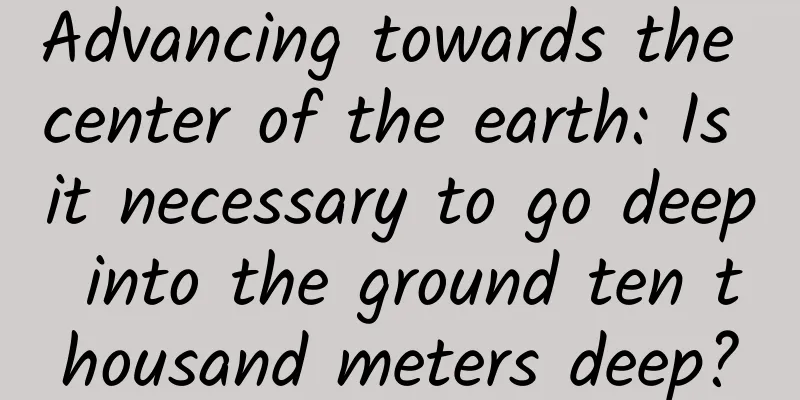Actually, we are all stars.

|
© CC BY 4.0 Leviathan Press: I forgot where I saw this joke about astronomy before, but it was said to be a true story. It is said that a biologist was doing research in New Guinea when he was young. When he learned that a total lunar eclipse would occur there, he wanted to imitate the ancient sage Thales and show off in front of the local natives. So before the lunar eclipse, he announced to the tribe that the full moon would disappear and the world would fall into darkness. As a result, an old chief came over and comforted him, saying, "Don't be afraid, young man, the moon will come out soon." - Statement - The content of this article is based on an objective historical perspective I hope you will follow scientific rationality and stay away from feudal superstition. * Han Yu and Octavian * Marble statue of Gaius Octavius Thurinus, now in the Vatican Museums. © CC BY 4.0 Octavian, the founding emperor of Rome, was a very contradictory person. The ancient Romans were often very secretive about their horoscopes. However, after Octavian won the political struggle, he ordered his horoscope to be made public , telling the world that his throne was "destined" and that people should stop being greedy or interfering. But it is said that when Octavian published the celestial palace map, he made some "beautification": he secretly changed his constellation from Capricorn (according to the ancient Roman calculation at that time) to Libra. I don't know whether it is true or not. Capricornus, as drawn by 17th-century astronomer Johannes Hevelius, has the typical goat's head and fish's tail. © Public domain Han Yu, a great poet from the Tang Dynasty, was also concerned about his Capricorn identity. He wrote in "Three Stars": When I was born, the moon was in the southern constellation. The ox raises its horns, the dustpan opens its mouth. The oxen are not seen in the box, the bucket is not filled with wine, … When you multiply or divide reputation, you gain little and lose a lot. The Southern Dipper in the Dou system corresponds to the Capricorn in the zodiac system. Therefore, these few sentences are actually Han Yu's summary of his life's depression by borrowing his own moon sign - Capricorn. As Han Yu's biggest fan, the great writer Su Shi followed closely in his idol's footsteps, as shown in Dongpo Zhilin: Fate: Tuizhi's poem says: "When I was born, the moon was in the southern constellation." I know that Tuizhi's Scorpio is his body palace, and I take Scorpio as my fate. I have been praised and criticized a lot in my life, maybe it's the same problem as mine. "Han Yu is Capricorn Moon, I am Capricorn Sun, we are fellow patients." This was not the end. The great writer Su immediately dragged his good brother Ma Mengde to ridicule him: Ma Mengde was born in the same year as me, eight years younger than me. There are no rich and noble people born in this year, and I and Meng De are the poorest. Looking at the two of us, Meng De should be ranked as the leader. "Ma Mengde and I are only eight days apart. But if you must compare us, Brother Mengde's life is more miserable. " Su Shi's younger brother Meng De was dismissed from office and followed Su Shi to Shaanxi after Su Shi was demoted. After the Wudai Poems Case, he followed Su Shi, who was demoted again, to Hubei. He also found a piece of land for Su Shi to grow vegetables and melons to prevent his good brother from starving to death. Oh yes, Su Shi later gave this piece of land a name, "Dongpo"... So, you still have to be cautious when making friends. In the "Famous Painting Collection", an unknown Southern Song painter copied the painting of the Goddess of Luo River by Gu Kaizhi of the Jin Dynasty. The monster biting the side of the boat in the middle of the picture is the localized image of Capricorn. The fish tail remains the same, but the goat head has become a dragon head. © Public domain Since the two great writers Han and Su expressed their dissatisfaction with Capricorn, Zhou Bida, Fang Dacong, Wen Tianxiang, Gao Qi, Yin Tinggao, Zeng Guofan... more and more writers began to follow suit and use the name of Capricorn to express their own depression. The sour taste brought by Capricorn has lingered in the history of Chinese language and literature for hundreds of years. * Scorpio corresponds to the large intestine, Aries corresponds to the bladder * Mr. Feng Shi, a famous Chinese astronomical archaeologist, once said: The history of Chinese civilization is as profound and long as its history of respecting heaven. As early as the Xia Dynasty, our ancestors had recorded astronomical phenomena such as solar eclipses and meteor showers. From a cultural perspective, the spread of the zodiac system that originated in the Mesopotamian Plain around the world is a form of " stimulus diffusion ", which means that a cultural phenomenon is culturally stimulated when it spreads to a new land, and makes changes in accordance with local conditions to adapt to local conditions, thus achieving the purpose of adapting to local customs. The eighth volume of the Mahāprajñāpāramitā Sūtra contains records of the “Dual Bird God” and the “Time Ox God”. Kyoto University Library The zodiac system was first introduced to ancient Greece with Alexander's eastern expedition. After being combined with Greek mythology and given a new name, it was spread to India and blended with Buddhism. Later, it was introduced to China as Buddhism spread eastward. The earliest written record of the twelve zodiac signs in China comes from the eighth volume of the Mahavairocana Sutra translated by the Sui Dynasty monk Narenyasa in 585 AD, which records the earliest Chinese translations of the constellations: Shooting God, Mojie, Water Vessel, Heavenly Fish, Chiyang, Time Ox, Double Birds, Crab God, Lion, Heavenly Girl, Scales, and Scorpion God. Everything else is normal, but translating Gemini into two birds is somewhat subtle. Let’s look at the picture below. This is a block print of the Great Compassionate Dharani Sutra found on the third floor of the Ruiguang Ancient Pagoda in Suzhou in 1978. In the middle, the twelve zodiac signs are arranged in a horseshoe shape around the Buddha of Incandescent Light sitting on an ox cart. The Great Compassion Dharani Sutra, Suzhou Museum. © raymond-lai The Libra Palace in the upper left corner of the picture still uses the image of a Western-style balance scale, but Gemini and Gemini are painted like servants and maids from the Song Dynasty. Such localization results can also be found in the "Buddha of Incomparable Light" in Cave 61 of Mogao Grottoes in Dunhuang. This is not an exaggeration. Let’s take a look at the Taoist version of the twelve zodiac signs. In the 52nd volume of the Taoist classic "The Supreme Yellow Scroll Great Fasting Ceremony" revised in the Ming Dynasty, the twelve zodiac signs were personified one by one, forming a Taoist system of gods and goddesses of the twelve zodiac signs, which is the Ming Dynasty version of the national style Saint Seiya . Very interesting. The "Zodiac Palace God" in the Ming Dynasty Water and Land Painting. The Saint Seiya in the middle holds a crow in his right hand, symbolizing "Yang", and a white rabbit in his left hand, symbolizing "Yin". It belongs to the "Yin Yang Palace", which was the name of Gemini at that time. © Water and Land Painting of Baoning Temple in Taiyuan, Shanxi Before the mid-Tang Dynasty, one’s social status was almost entirely determined by one’s origin. Although fate had its ups and downs, the solidification of class often made people believe that their fate had already been written. The Southern and Northern Dynasties was the period when the aristocratic family system was most serious. Although Emperor Wu of Song, Liu Yu, was already the emperor, due to his commoner origin, he could only marry into the aristocratic families and could not marry the women of the royal families of other countries. By the middle of the Tang Dynasty, the family system collapsed and class barriers were gradually broken down. The Song Dynasty promoted the imperial examination system and allowed the sale of land, which gave countless aspiring young people a chance to move up the social ladder. People began to worry about their fate and look forward to the future. So they looked up and cast their gazes towards the starry sky above their heads. What Man Really Finds in Heaven It is a reflection of himself and the order of the world. —German philosopher Cassirer There are other very interesting applications. Most generals in the early Song Dynasty were promoted from soldiers, so more than 60 years after the founding of the country, many generals were still ignorant of military tactics. Therefore, the Song government revised China's first military encyclopedia, "Wu Jing Zong Yao", which specifically teaches people how to lead troops in battle. On the one hand, the book contains solid information such as the earliest record of gunpowder formula in history, and guides to making siege machines and naval ships; on the other hand, it combines the twelve zodiac signs with Liuren divination and the five elements formation as the metaphysical theoretical basis for guiding combat. A picture of a ship in the Wujing Zongyao. © Public domain Spring Equinox, mid-February, the sun is at 2 degrees and 4 minutes of Kui. Three days later, it will enter Aries Palace, and its god is Tiankui. ——"Wu Jing Zong Yao·Zhan Hou Wu·Liu Ren" What does this feel like? It's like a book telling you: The best fighter this week is a Scorpio captain, but if the opposing general is an Aquarius, let a Virgo take care of him (big mistake). Doctors in the Dark Ages also read the constellations. They believed that the microcosm in the human body was closely related to the macrocosm in nature, and the stars would have the answers to the cures for major illnesses and minor disasters. As early as the first century AD, the ancient Roman astrologer Marcus Manilius established a complete constellation-organ correspondence system, in which the twelve zodiac signs correspond to every part of the human body from head to toes. Find out which organ your zodiac sign corresponds to. © CC BY 4.0 For example, Aries corresponds to the head and eyes, Leo corresponds to the chest and heart. Scorpio is worse off, as it corresponds to the reproductive system as well as the excretory system, including the large intestine. But there is actually some romance in this statement. Your frequent and urgent urination is just because Mercury is retrograde in the night sky. Taoism has also done this. The Taoist classic "Yuanyuan Daomiao Dongzhen Jipian" combines the medical theory of viscera and meridians with the twelve zodiac signs. In this system, Leo still corresponds to the heart, and Scorpio still corresponds to the large intestine. Aries, which is supposed to correspond to the brain, unfortunately corresponds to the bladder. The heavenly path runs southward, and its symbol is Aries in the upper part. The lower one is Lu, and its qi is in the human bladder. ——《The Origin of the Mysterious Dao and the True Story of the Cave》 * As above, same as below* The development of astronomy in the East and the West is completely different. Eastern astronomy is based on the Earth's rotation plane , the celestial equator, while Western astronomy is based on the Earth's revolution orbit , the ecliptic. But what is the same is that ancient people in the East and the West could only observe the stars with their naked eyes . Therefore, in most cases, the research objects were limited to "phenomena" visible to the naked eye, such as the Seven Luminaries, comets, and solar eclipses. They watched the sun rise in the east and set in the west, and the moon wax and wane, and based on these observations it was almost inevitable that they came to the conclusion that the Earth was the center of the universe . The geocentric theory was first proposed by the ancient Greek astronomer Ptolemy, an old friend of our nine-year compulsory education, in his "Almagest". It remained the mainstream theory in the Western world for more than a thousand years until it was replaced by the emergence of Copernicus' heliocentric theory. But Ptolemy's other work, the Tetrabiblos, a sister work of the Almagest, has survived to this day. Before the Tetrabiblos, the right to interpret astrology belonged to mythology and religion, and those who were familiar with this often used arbitrary tones to influence the world. However, Ptolemy made it clear in the first volume of this book that he openly opposed "charlatans". The astrological system he developed was based on the widely accepted theory of humors at the time rather than oral myths and legends. This system believed that the movement of celestial bodies would affect the atmosphere and nature according to certain rules, and that the human body was also part of nature. Therefore, the future could be predicted through the composition of individual body fluids and the properties of the horoscope. An engraving of Ptolemy being instructed by his astronomical muse, from Gregor Reisch's Margarita Philosophica, 1508. The crown on Ptolemy's head is often seen as a tribute to his scientific contributions. © Public Domain This line of thought followed the thinking line of the Peripatetic School on natural philosophy, so it was later widely accepted by the mainstream Christian theology in the Middle Ages. In the Renaissance, it was included in the liberal arts education of universities and had a huge impact on medicine and literature. This situation was not broken until the end of the 17th century when the powerful rationalism of the Enlightenment was launched. as above, so below. As above, so below. ——Hermes How should we evaluate Ptolemy and his Tetrabiblos? Simply slandering and vilifying them or denying them outright is obviously biased. In terms of "inheritance", compared with the astrology of the pre-Ptolemaic era, this is a set of theories based on logic and principles. It has shed its original religious color and begun to show a tendency to move closer to rational science. In terms of "inception", the heliocentric theory has one foot standing on Ptolemy's shoulder and the other foot undoubtedly standing on the technical foundation of the astronomical telescope. When the heliocentric theory was first proposed in 1543, it was also considered heresy. It was not until nearly a hundred years later that it was finally confirmed with the help of the astronomical telescope. This situation is like the invention of the microscope in the 1980s, which supported the germ theory and completely overturned the humor theory that had prevailed for more than a thousand years. The telescope and microscope expanded the limits of human vision from two opposite directions , revealing scenes that humans had never seen before, and thus opening a new chapter in history. On the road of scientific exploration, we should and can only rely on our observations, even though they may not be objective from a macro-historical perspective. Astrology is obviously not a falsifiable science. Countless studies in history have denied the scientific nature of astrology . For example, American astronomer Shawn Carlson invited 28 well-known astrologers to participate in a double-blind experiment during his undergraduate studies: the experimental results showed that the accuracy of astrology is no higher than random chance. (www.nature.com/articles/318419a0) Or a long-term follow-up survey of more than 2,000 people born within a few minutes of each other in London, England, starting in 1958. According to astrology, they should have more similarities with each other - but the results show that these people have no statistically significant convergence in more than 100 aspects such as intelligence, marriage, aggression, art, sports, mathematics, etc. (www.telegraph.co.uk/news/uknews/1439101/Astrologers-fail-to-predict-proof-they-are-wrong.html) However, truth or falsity is not the only criterion for us to firmly believe in a certain narrative. We are used to finding order in disorder and meaning in poverty. When some beliefs are beneficial to some, they will have supporters. In day-to-day life or in difficult situations, the positive significance of astrology is that it allows people to temporarily withdraw from the individual, put themselves in a group to observe or even reflect on themselves, so as to find a sense of belonging, fight against the anxiety brought by uncertainty, or express negative emotions - just like Han Yu. * The star is gone, so we are here * This subject must force the mind to look upward, Things that lead the mind away from here, To see things high up. —Plato In 1970, the year after humans successfully landed on the moon for the first time, a Zambian nun wrote to Ernst Stuhlinger, then deputy director of science at NASA's Marshall Space Flight Center, asking: Why spend billions of dollars on a Mars project when so many children in the world are still starving? Stuhlinger quickly wrote back to the nun, patiently explaining the benefits of developing the aviation industry from many aspects such as national operations, agricultural production, and applied science, and telling the nun that space exploration was not an investment seeking short-term returns. Humans do not understand the purpose of traveling to the stars, just as fish hundreds of millions of years ago did not know why they had to set foot on land. Stuhlinger also attached a photo of " Earthrise " with the letter. It was taken by American astronauts from the lunar orbit in 1968. The foreground is the moon, and the background is the earth we live in, which seems to be rising slowly from the shadow of the moon. Earth Rising, 1968. © Public Domain "The Earth is the cradle of mankind, but mankind cannot live in the cradle forever." This sincere reply from Stuhlinger was later published by NASA under the title "Why Explore the Universe". This quoted photo was also named one of the 100 most influential photos of the 20th century by Time magazine. This is a very representative photo of the Earth in the history of human spaceflight. Although the Earth in another photo is not as clear as this one - it is even just a dim blue dot, it is also very beautiful (see the picture below). © Public Domain This photo is from the Voyager 1 spacecraft, currently the farthest man-made object from Earth. This spacecraft, born with the goal of endless interstellar wandering, is heading for the unknown deep space with the sounds of waves, whales and the cries of human babies. The power for transmitting signals is expected to run out in 13 years, but it will continue to drift towards the center of the Milky Way, but no news will be sent back. The moment captured in the photo is a glance back at the spacecraft as it was about to leave the solar system in 1990. The Earth, 6.4 billion kilometers away, only occupies 0.12 pixels of the entire photo. Here is a quote from Carl Sagan's description of this photo: The earth is here, home is here, and we are here. Everyone you love, everyone you know, everyone you've ever heard of, All our joys and sorrows, a thousand self-confident beliefs, ideas, and economic doctrines, Every hunter or conqueror, every warrior or coward, Every creator or destroyer of civilization, every king or peasant, Every young person in love, every father and mother, Aspiring children, inventors and explorers, Spiritual mentors, corrupt politicians, Every "superstar", every "supreme leader", Every saint or sinner in human history... Everything about us, All on a speck of dust suspended in the sun... * The long journey is full of hope * We are here, but where did we come from and why are we here? Cosmologist Lawrence Krauss had a romantic explanation for this in a 2009 lecture: The amazing thing is that every atom in our bodies came from the explosion of a star. And the atoms that make up your hands may have come from two completely different stars. This is the most poetic part of my understanding of physics: All living beings are stardust... The star is gone, and that is why we are here. Look up at the stars, sometimes just because they are there and we are here too. Nearly a hundred years ago, Mr. Zhu Wenxin, the pioneer of modern astronomy in China, summarized the significance of astronomy in this way: Astronomy is the ancestor of science and the mother of culture. The origin of world culture is closely related to astronomy, and the development of world science is promoted by astronomy. From a scientific point of view, astrology is a simple and ineffective view. But it is undeniable that astrology, which is inseparable from astronomy, has given mankind thousands of years of inspiration and comfort. No matter how complicated and changing the world is, when we look up at the starry sky, we can always gain a moment of holiness from the eternal constancy. From a longer historical perspective, the stars also ignited people's desire to explore the world. Navigation, which was developed based on ancient astronomy, brought people knowledge and wealth, and also made people who lived in seclusion in a corner begin to realize that there were people like them at the end of the horizon. Curiosity, courage, challenge... all the good qualities of human beings were praised here. By Santen Proofreading/Rabbit's Light Footsteps This article is based on the Creative Commons License (BY-NC) and is published by Santen on Leviathan The article only reflects the author's views and does not necessarily represent the position of Leviathan |
>>: The reason I recommend you to eat more pears, just one is enough!
Recommend
A practical guide to operating Douyin accounts in the K12 education industry
The Chinese proverb "It is easy to go from f...
The Birth of the Earth's "Sculptor"
The movement of glaciers constantly "carves&...
Andy Rubin's nickname at Apple: Android
[[122113]] Robert Scoble, a famous American techn...
Why do humans wipe their butts after defecation, but animals don't?
Source: Dr. Curious...
CP, I will just watch your money go down the drain
My name is Pai Gu. Many people have heard of me. ...
Can adding a spoonful of oil and vinegar to rice really reduce the rate of blood sugar rise? The truth is...
Recently, several acquaintances have asked me: Wh...
Baidu promotion optimization practice: teach you how to do Baidu promotion step by step (Part 1)
Due to the occupation of Baidu promotion position...
Keep: Designing a model centered on user growth
According to the "2020-2026 China Online Spo...
High-altitude "crisis"! How strong is the cosmic radiation that causes cancer in flight attendants?
Recently, a piece of news caught our attention. A...
Insomniacs can't fall asleep, so they keep taking sleeping pills? The love-hate relationship between insomniacs and sleeping pills
Author: Jiang Molin Beijing Hospital of Tradition...
Antimatter has unparalleled energy! How can we "control" it?
Modern science believes that only a little bit of...
ASO Optimization: When users search for APP, what are they searching for?
Introduction: With the rise of mobile Internet, A...
Douyu product operation analysis
When it comes to games, I believe everyone’s firs...
High repurchase fan community operation strategy
Among the three major categories of communities, ...
Why do you always feel that you are not good-looking?
This article was reviewed by Zhao Wei, MD, associ...









